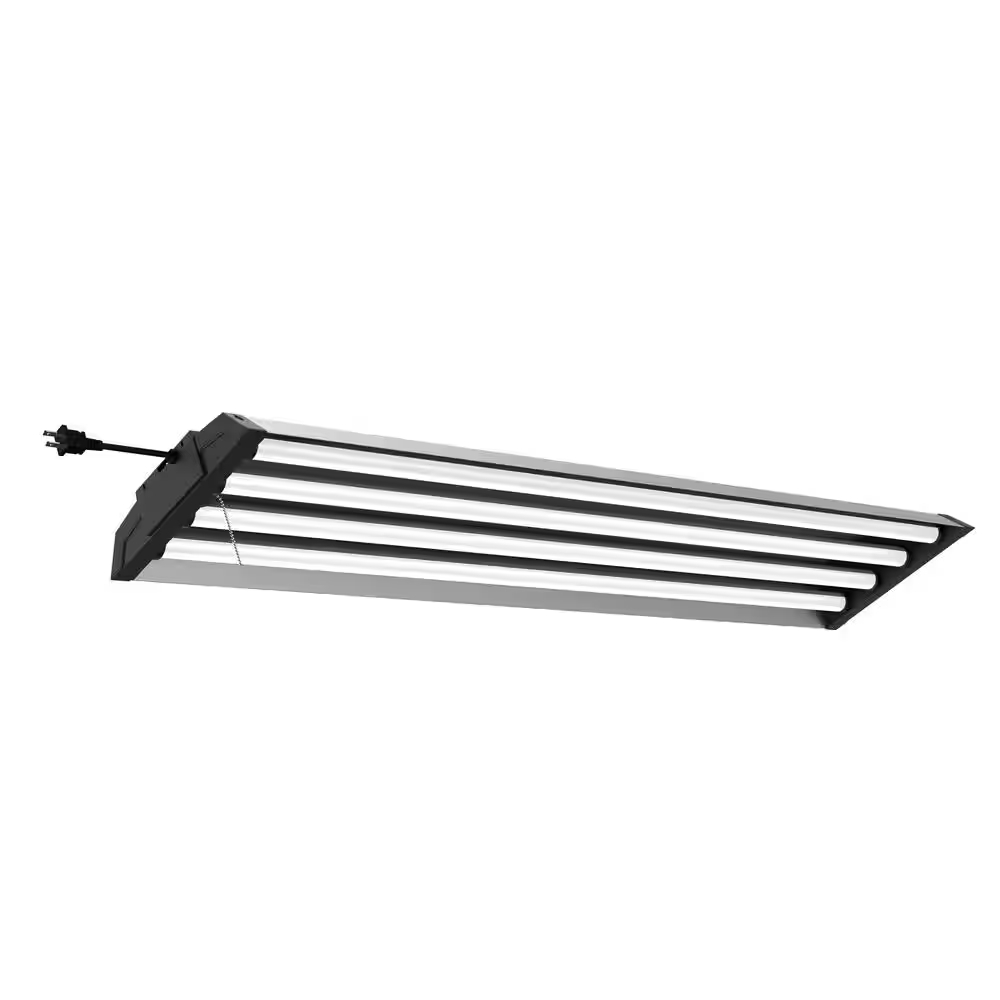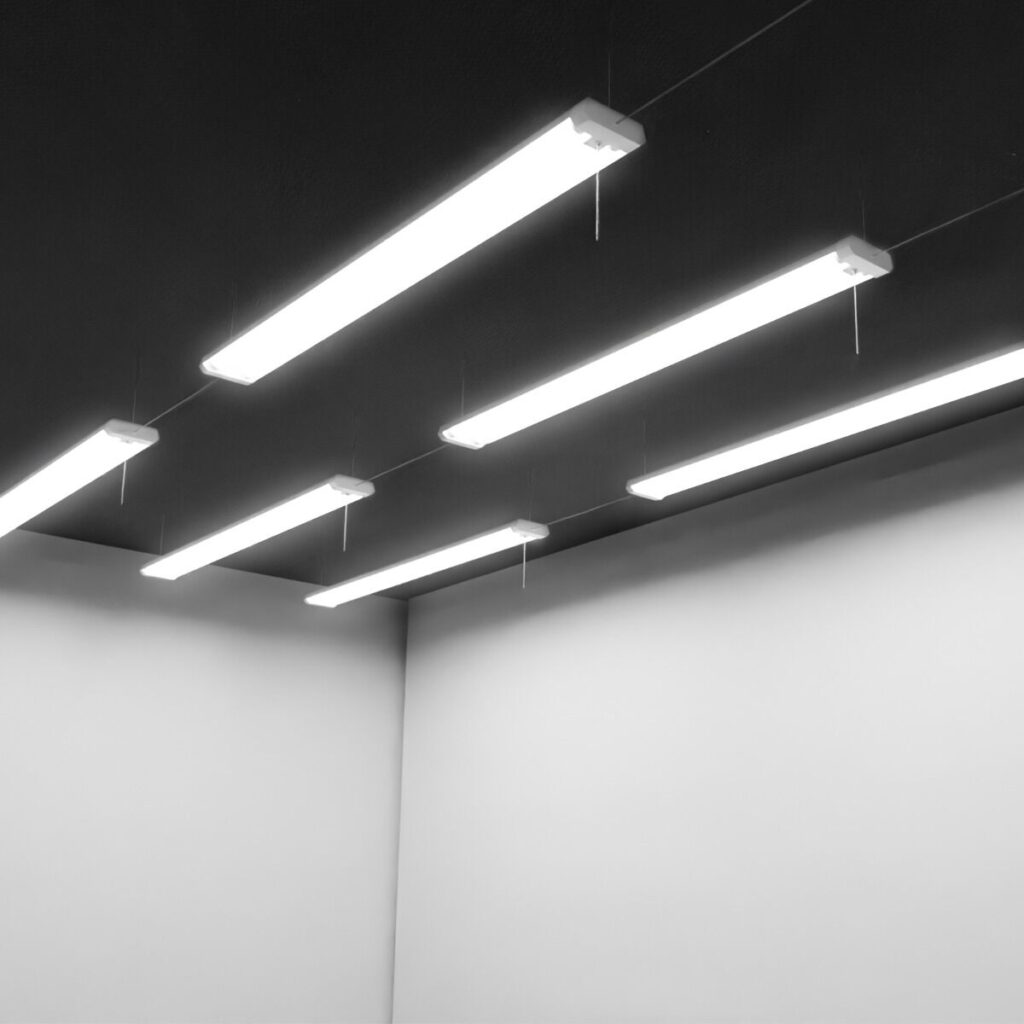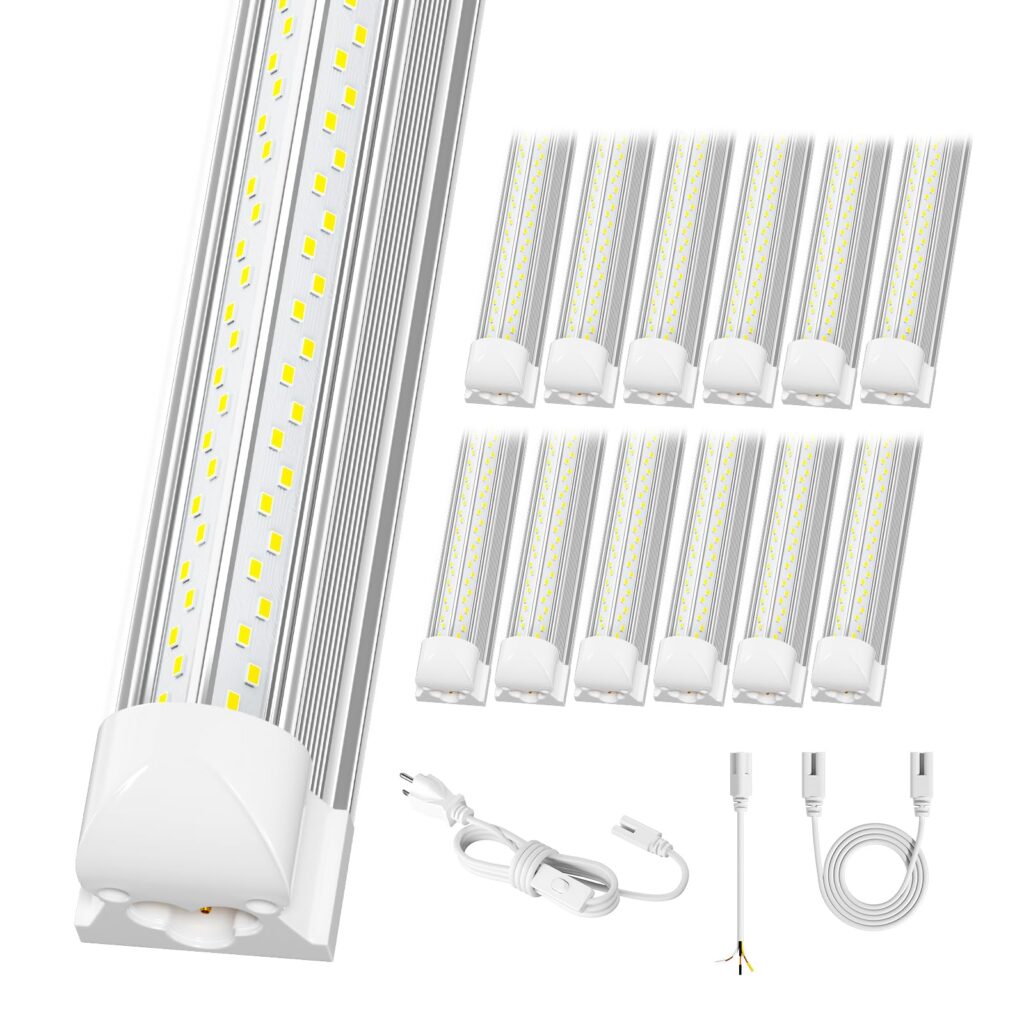LED Shop Light: In today’s fast-paced world, efficient and reliable lighting is crucial for any workspace. Among the myriad of options available, LED shop light technology stands out as a modern solution for brightening up workshops, garages, and commercial spaces. Also Visit
What Are LED Shop Light?
LED shop light are lighting fixtures designed to provide bright, efficient illumination for various work environments. Unlike traditional incandescent or fluorescent bulbs, LED (Light Emitting Diode) technology uses semiconductor materials to convert electricity into light. This technology has revolutionized lighting with its numerous advantages over older technologies. Read More

Table of Contents
- What Are LED Shop Light?
- Types of LED Shop Light
- Benefits of LED Shop Light
- How to Choose the Right LED Shop Light
- Installation Tips for LED Shop Lights
- Maintenance and Care
- Conclusion
- FAQs
Key Features of LED Shop Light
- Energy Efficiency: LED shop lights are known for their energy efficiency. They consume significantly less power compared to incandescent and fluorescent bulbs. For instance, while a traditional incandescent bulb might use 60 watts of power to produce the same amount of light as a 15-watt LED, the LED light will use less energy and reduce your electricity bills. For more details, check out Energy.gov’s guide on LED efficiency.
- Long Lifespan: LEDs are designed to last much longer than traditional bulbs. While incandescent bulbs typically last around 1,000 hours and fluorescent bulbs around 10,000 hours, LED shop lights can last up to 50,000 hours or more. This extended lifespan means fewer replacements and less hassle. Learn more about LED longevity from LEDs Magazine.
- Durability: LEDs are solid-state devices, which makes them more resistant to shocks and vibrations compared to fragile incandescent or fluorescent bulbs. This durability makes them ideal for environments where equipment might be subject to rough handling or impacts. Read more about LED durability from HowStuffWorks.
- Instant Light: One of the key benefits of LED technology is its ability to provide full brightness instantly, unlike some fluorescent lights that require time to warm up. This instant illumination is particularly useful in situations where immediate lighting is necessary. For further insights, visit LEDs Magazine’s article on LED performance.
- Low Heat Emission: LEDs generate very little heat compared to incandescent bulbs, which not only makes them more energy-efficient but also reduces cooling costs in your workspace. This lower heat output also makes LEDs safer to use in enclosed spaces. For more information on heat emission, see EcoFriendlyHouse.com.
- Environmentally Friendly: Unlike traditional bulbs, LEDs do not contain hazardous materials like mercury and are fully recyclable, making them a more environmentally responsible choice. You can read more about the environmental benefits of LEDs on The Environmental Protection Agency (EPA) website.
Types of LED Shop Light
LED shop lights come in various designs and configurations to meet different needs. Here’s an overview of the most common types:
1. Linear LED Shop Light
Linear LED shop lights are elongated fixtures that provide uniform light across a wide area. They are ideal for large spaces like warehouses, garages, and workshops. These lights are available in various lengths and often come in configurations that can be linked together for even greater coverage.
- Example Product: Hyperikon LED Shop Light is an excellent example of a linear LED shop light. It offers adjustable color temperature and high brightness, making it suitable for various tasks.
2. LED Tube Lights
LED tube lights are designed to replace traditional fluorescent tube lights. They are available in T8 and T5 configurations and can be used in existing fixtures, making them a straightforward upgrade for those who want to enhance energy efficiency without a complete overhaul.
- Example Product: Barrina LED T8 Tube Lights are a popular choice for those looking to replace fluorescent tubes with LEDs. They offer excellent brightness and energy savings.
3. LED High Bay Lights
LED high bay lights are designed for use in high-ceiling environments. They are ideal for industrial and commercial settings, such as warehouses and factories, where powerful illumination is required. High bay lights provide focused light that can reach significant distances.
- Example Product: Lithonia Lighting High Bay LED Light is a high-performance option for high-ceiling applications. It offers robust construction and high light output.
4. LED Shop Light Panels
LED shop light panels are flat, rectangular fixtures that provide a sleek and modern look. They are often used in office settings and retail spaces where aesthetics are important. These panels can be installed in various configurations, including recessed and surface-mounted.
- Example Product: Hykolity LED Flat Panel Light offers a clean and contemporary design suitable for a variety of environments. It provides even light distribution and comes with adjustable color temperatures.

Benefits of LED Shop Light
Switching to LED shop lights offers numerous advantages, making them a popular choice for a range of applications. Here are some of the key benefits:
1. Cost Savings
One of the most compelling reasons to switch to LED shop lights is the potential for cost savings. LED lights use up to 80% less energy than incandescent bulbs, resulting in lower electricity bills. Additionally, their longer lifespan means fewer replacements and reduced maintenance costs. For a detailed comparison of cost savings, check out Energy Star’s LED lighting cost savings.
2. Improved Visibility
LED shop lights provide bright and even illumination, enhancing visibility and reducing eye strain. This is particularly important in work environments where accurate and detailed tasks are performed. The high lumen output of LED lights ensures that all areas of your workspace are well-lit, which can boost productivity and safety. Explore more about lighting for productivity at Lighting Research Center.
3. Reduced Maintenance
Due to their long lifespan and durability, LED shop lights require less frequent maintenance compared to traditional lighting options. This is especially advantageous in large commercial or industrial settings where changing bulbs can be time-consuming and costly. For more on the benefits of reduced maintenance, see The Illuminating Engineering Society.
4. Enhanced Safety
LED shop lights are safer to use than traditional bulbs due to their low heat emission and lack of hazardous materials. Unlike fluorescent lights, which contain mercury, LEDs do not pose a risk of toxic exposure. Their low heat output also minimizes the risk of fire hazards. For information on LED safety, visit The National Fire Protection Association.
5. Environmental Impact
Choosing LED shop lights is a more environmentally friendly option. LEDs have a lower carbon footprint compared to traditional lighting technologies, and their recyclable nature further reduces their environmental impact. Learn more about the environmental benefits of LEDs from Green Building Advisor.

How to Choose the Right LED Shop Light
Selecting the right LED shop light involves several considerations. Here are some key factors to keep in mind:
1. Brightness and Lumens
The brightness of an LED shop light is measured in lumens. Higher lumen ratings correspond to brighter light. When choosing a light, consider the size of your workspace and the specific tasks you perform. For example, a large workshop may require lights with higher lumen output compared to a smaller garage. For more on lumens and brightness, visit Lighting Answers.
2. Color Temperature
Color temperature, measured in Kelvin (K), affects the appearance of the light. Lower Kelvin values (2700K-3000K) produce a warm, yellowish light similar to incandescent bulbs, while higher Kelvin values (4000K-6500K) produce a cooler, bluish light that is ideal for work environments. Choose a color temperature that suits the atmosphere you want to create and the tasks you perform. For more on color temperature, check out The Spruce.
3. Size and Installation
Consider the size of the LED shop light and how it will fit into your space. Linear lights are ideal for long workbenches, while high bay lights are suited for high ceilings. Some LED shop lights come with mounting hardware for easy installation, while others may require professional installation. For installation tips, see DIY Network’s guide on installing shop lights.
4. Energy Efficiency
Look for LED shop lights that are Energy Star certified or have high efficacy ratings. Energy-efficient models will help you save on electricity costs and reduce your environmental impact. For a list of Energy Star certified products, visit Energy Star’s product database.
5. Dimmability and Features
Some LED shop lights offer dimmable functionality, allowing you to adjust the brightness according to your needs. Other features to consider include motion sensors, remote controls, and adjustable color temperatures. These features can add convenience and enhance the functionality of your lighting system. For more on advanced lighting features, see Lighting Controls Association.
Installation Tips for LED Shop Lights
Installing LED shop lights can be straightforward if you follow these tips:
1. Read the Instructions
Always start by reading the manufacturer’s instructions and installation guidelines. Different models may have specific requirements or recommendations for installation. For example, Lutron’s installation tips can provide additional guidance on installing advanced lighting systems.
2. Turn Off Power
Before starting the installation, ensure that the power is turned off at the circuit breaker. This step is crucial for safety and to prevent electrical accidents. For information on electrical safety, visit The Electrical Safety Foundation International.
3. Gather Tools and Materials
Collect all necessary tools and materials before beginning the installation. This may include screwdrivers, mounting brackets, wire connectors, and electrical tape. For a list of common tools for electrical work, see Family Handyman.
4. Install Mounting Brackets
If your LED shop light requires mounting brackets, install them securely according to the manufacturer’s instructions. Ensure that they are level and properly aligned. For detailed bracket installation guides, visit Home Depot’s DIY section.
5. Connect the Wires
Follow the wiring diagram provided by the manufacturer to connect the LED shop light to your electrical system. Use wire connectors and electrical tape to secure the connections and prevent any exposed wires. For wiring tips, see Wiring Depot.
6. Mount the Light
Once the wiring is complete, mount the LED shop light onto the brackets or fixture. Ensure that it is securely attached and properly aligned. For mounting techniques, check out This Old House.
7. Turn On the Power
After completing the installation, turn the power back on at the circuit breaker. Test the LED shop light to ensure it is functioning correctly and providing the desired level of illumination. For troubleshooting tips, visit Consumer Reports.
Maintenance and Care
While LED shop lights require minimal maintenance, regular care can help extend their lifespan and ensure optimal performance. Here are some maintenance tips:
1. Clean Regularly
Dust and debris can accumulate on the surface of the light, reducing its brightness. Clean the fixture regularly with a soft, dry cloth to keep it free of dirt and dust. For cleaning tips, visit Better Homes & Gardens.
2. Check for Loose Connections
Periodically inspect the wiring and connections to ensure they are secure. Loose connections can lead to flickering or malfunctioning lights. For more on electrical maintenance, see The Home Depot’s electrical tips.
3. Replace Components
If your LED shop light has replaceable components, such as drivers or lenses, replace them as needed to maintain performance. For information on LED component replacement, visit LEDs Magazine.
4. Avoid Excessive Heat
While LEDs generate less heat than other lighting technologies, it is still important to avoid placing them near sources of excessive heat or in environments where they may overheat. For more on managing LED heat, see Green Building Advisor.
Conclusion
LED shop lights offer a multitude of benefits, including energy efficiency, long lifespan, and durability. Whether you are upgrading your home workshop, outfitting a commercial space, or simply looking for a reliable lighting solution, LED shop lights provide a versatile and cost-effective option. By understanding the different types, benefits, and installation tips, you can make an informed decision that enhances your workspace and meets your specific needs.
For more detailed information on LED shop lights, you can explore resources from LEDs Magazine, Energy Star, and The Illuminating Engineering Society. These resources offer valuable insights and updates on the latest advancements in LED technology. For More Info
FAQs
Q1: What is an LED shop light?
An LED shop light is a type of lighting fixture designed to provide bright, efficient illumination in various work environments. Unlike traditional lighting options such as incandescent or fluorescent bulbs, LED shop lights use Light Emitting Diodes (LEDs) to produce light. This technology offers several advantages, including energy efficiency, long lifespan, and low heat emission.
Q2: How do LED shop lights compare to traditional lighting?
LED shop lights are significantly more energy-efficient than traditional incandescent or fluorescent lights. They use up to 80% less energy to produce the same amount of light, leading to lower electricity bills. Additionally, LEDs have a much longer lifespan—up to 50,000 hours compared to 1,000 hours for incandescent bulbs and 10,000 hours for fluorescent bulbs. For more detailed comparisons, see Energy Star’s LED lighting guide.
Q3: What are the benefits of using LED shop lights?
LED shop lights offer several benefits:
Energy Efficiency: They consume less power than traditional lighting, reducing energy bills.
Long Lifespan: LEDs last much longer, which means fewer replacements and lower maintenance costs.
Durability: LEDs are more resistant to damage from impacts and vibrations.
Instant Light: They provide full brightness immediately without a warm-up period.
Low Heat Emission: LEDs generate less heat, which can help reduce cooling costs and enhance safety.
Environmental Friendliness: LEDs are free from hazardous materials like mercury and are fully recyclable.


Thanks for sharing. I read many of your blog posts, cool, your blog is very good.